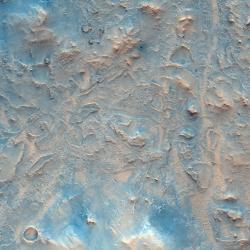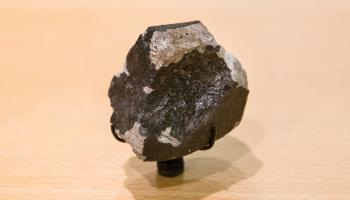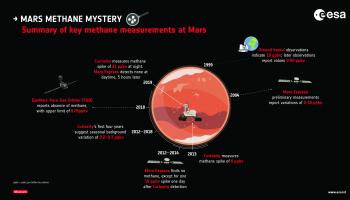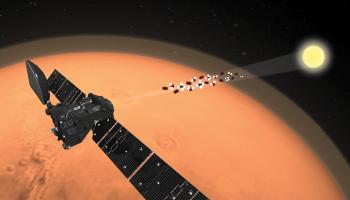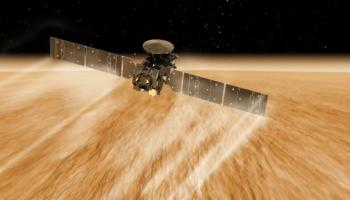It's incredible to think that pieces of a protoplanet – a large asteroid/small baby planet that never had the chance to become a real one - have been scattered around the solar system and made their way to planet Earth, in our time! And not just that, one piece of the protoplanet Vesta even made it all the way to Belgium. It was seen falling into a barn in the southern village of Tintigny in 1971, by Mr Eudore Schmitz. At the time, it was entrusted to the village teacher for identification, but fell into oblivion for over 40 years.
The methane mystery on Mars has had many twists and turns in recent years with unexpected detections and non-detections alike. Most recent is the detection in June by NASA’s Curiosity rover, which reported the highest burst of methane recorded yet. However, neither ESA’s Mars Express nor the ExoMars Trace Gas Orbiter recorded any signs of the elusive gas, despite flying over the same location at a similar time.
Today, the prestigious journal Nature publishes two papers describing the first results of the Belgian NOMAD instrument on board ExoMars Trace Gas Orbiter. New evidence of the impact of the recent planet-encompassing dust storm on water in the atmosphere, including the first vertical measurements of semiheavy water on Mars, and a surprising lack of methane, are among the scientific highlights of the ExoMars Trace Gas Orbiter’s first year in orbit. Principal Investigator of the NOMAD instrument, Ann Carine Vandaele at the Royal Belgian Institute for Space Aeronomy is delighted with these results.

